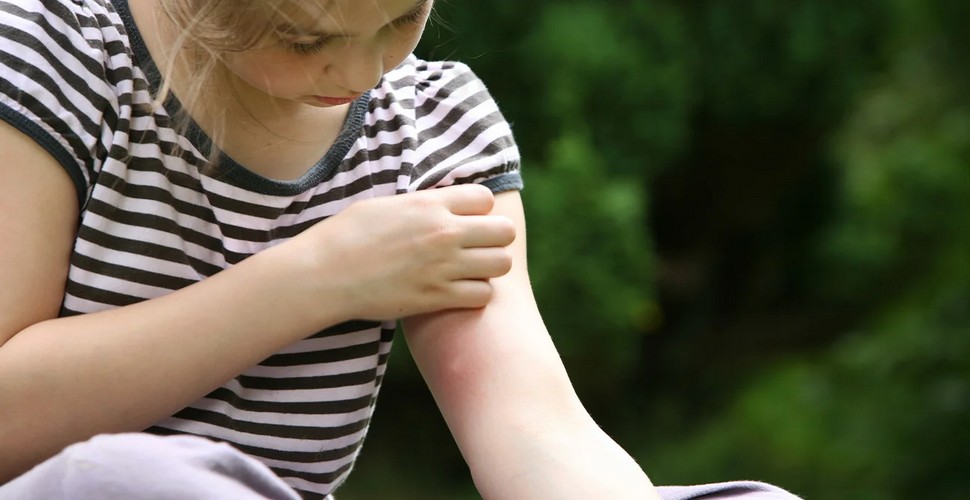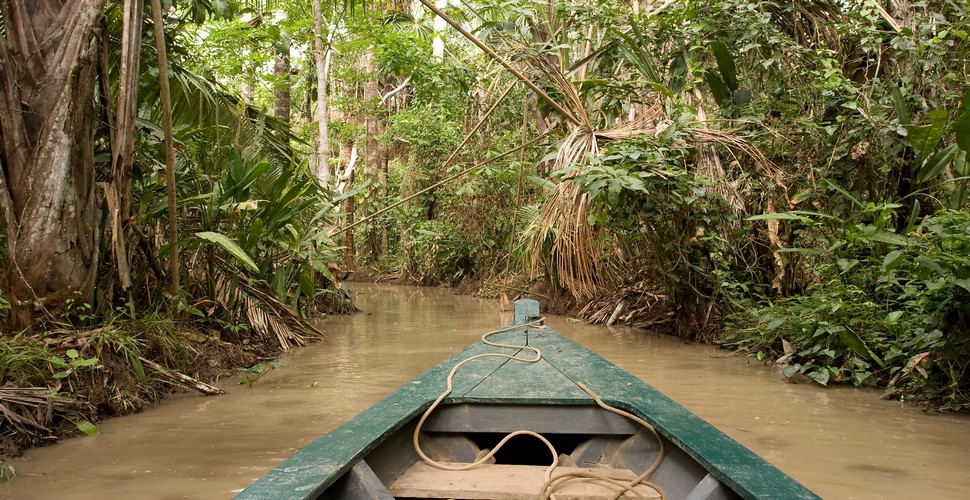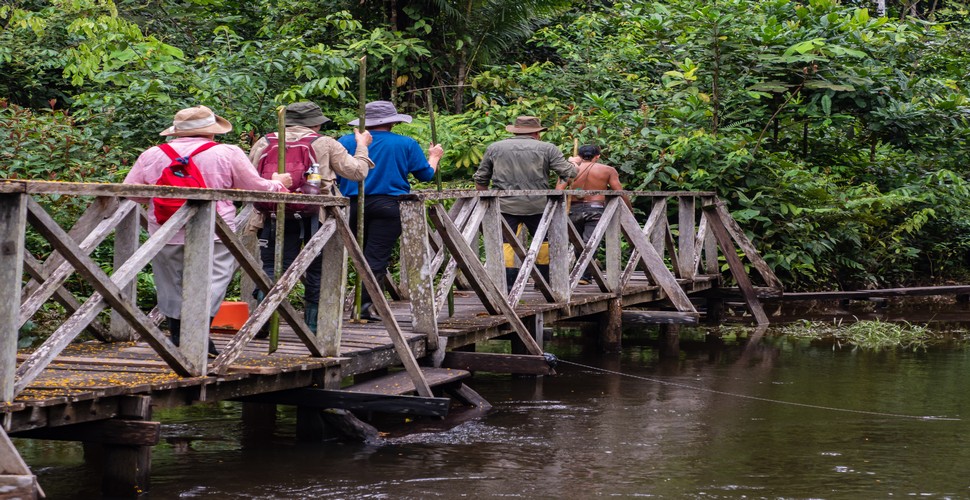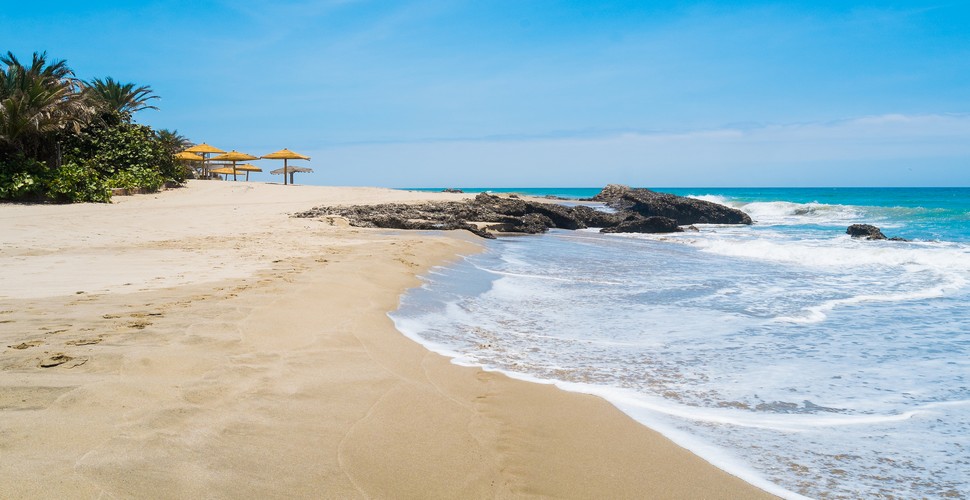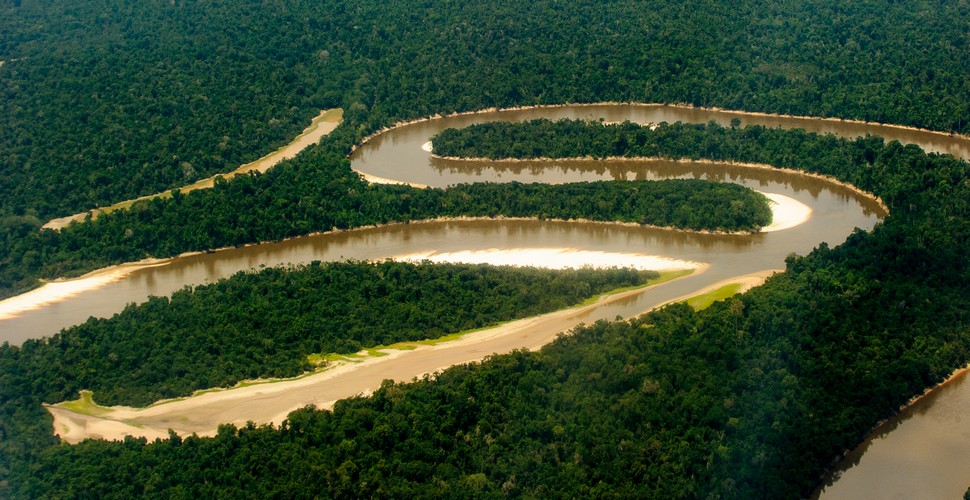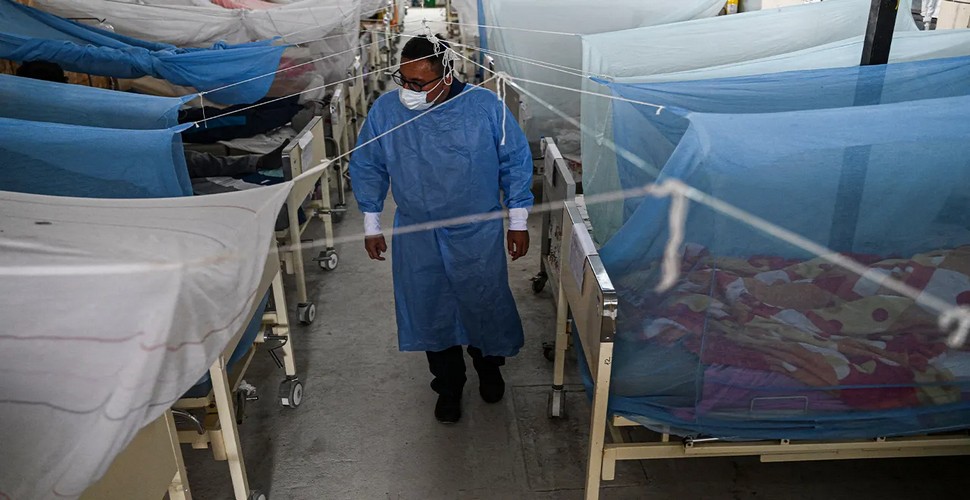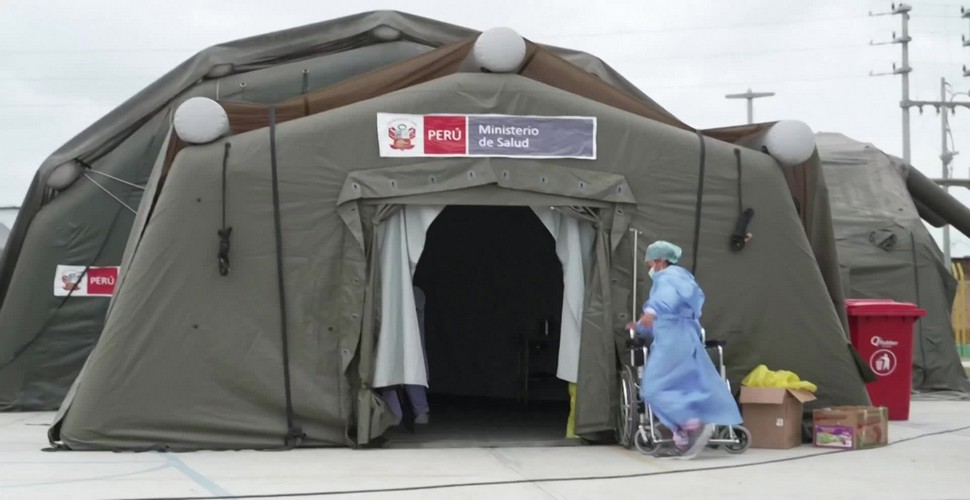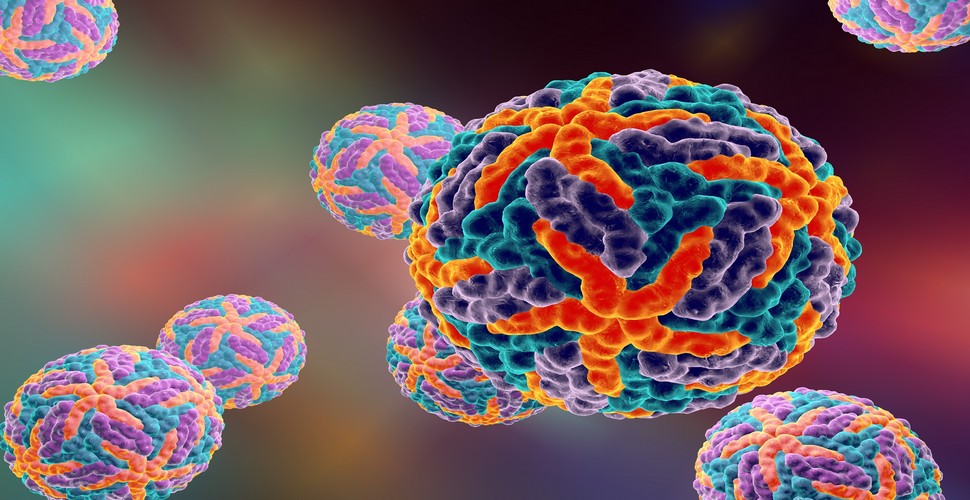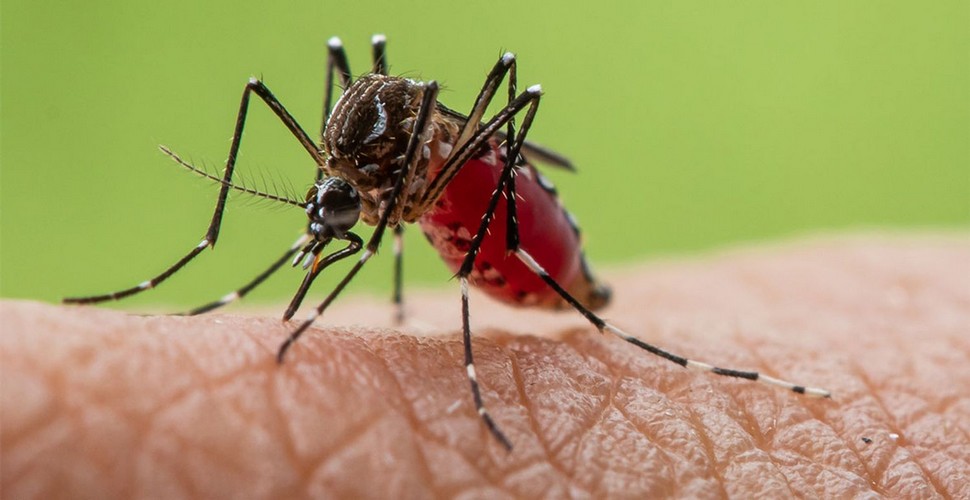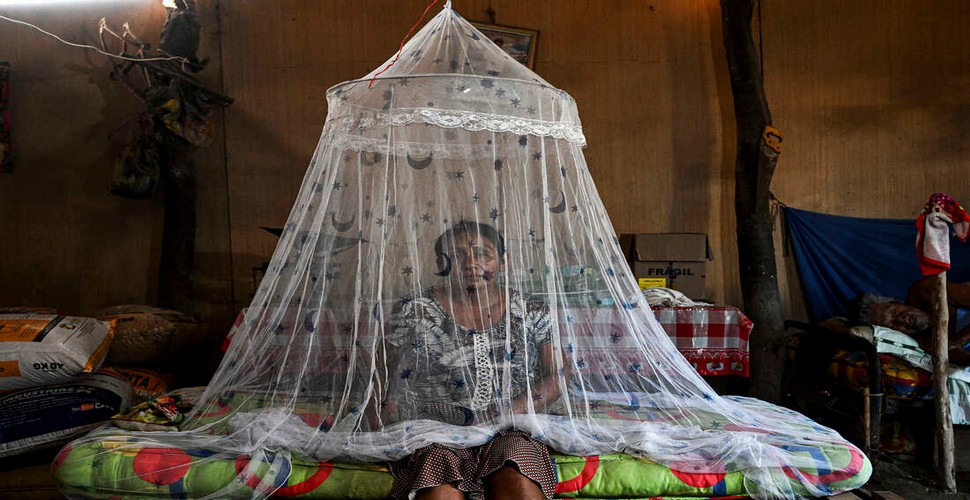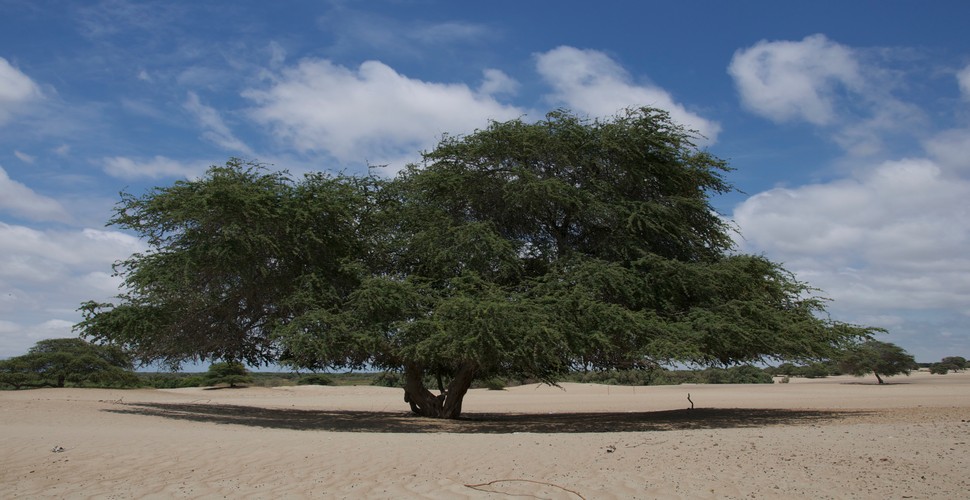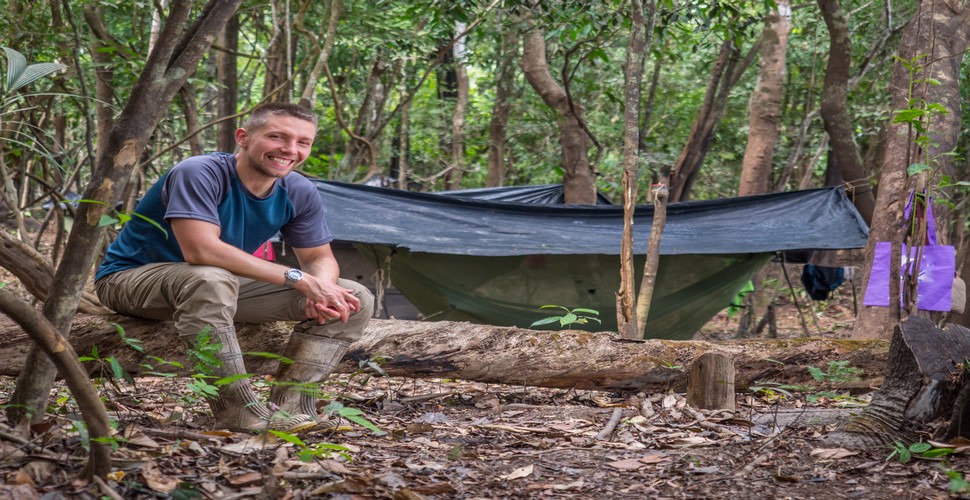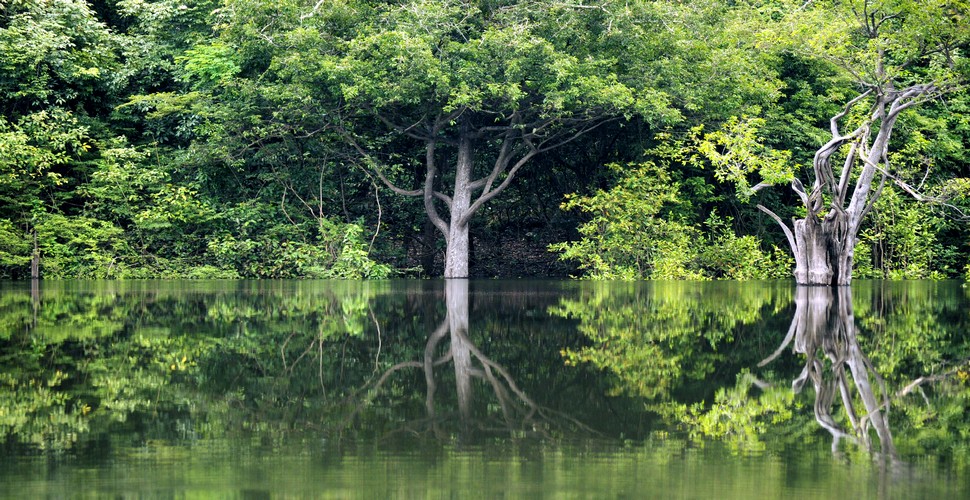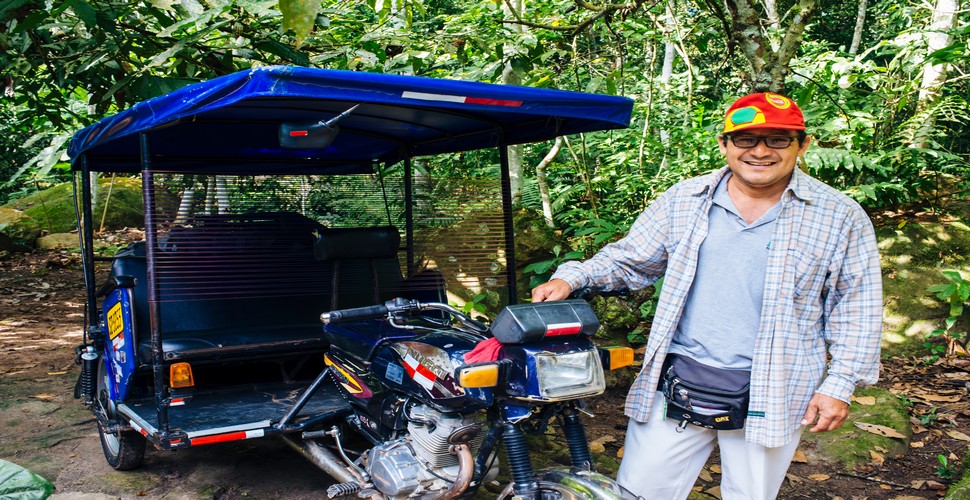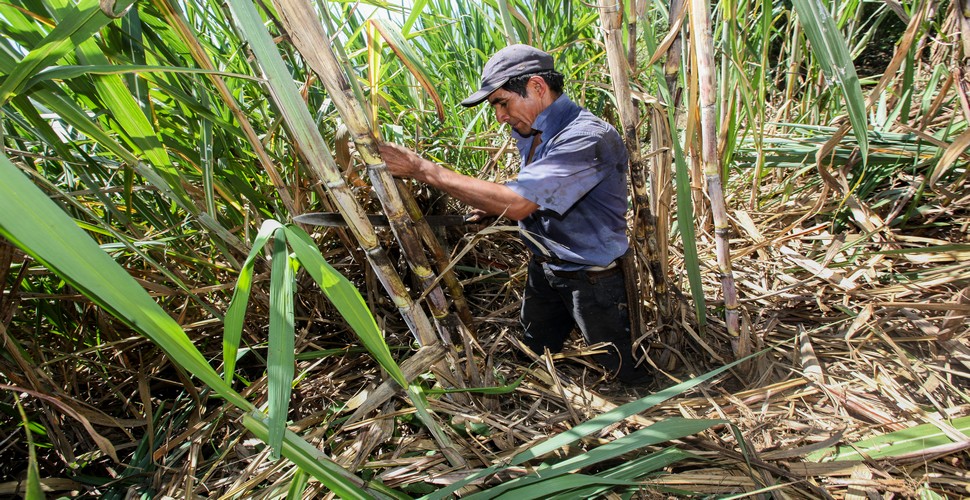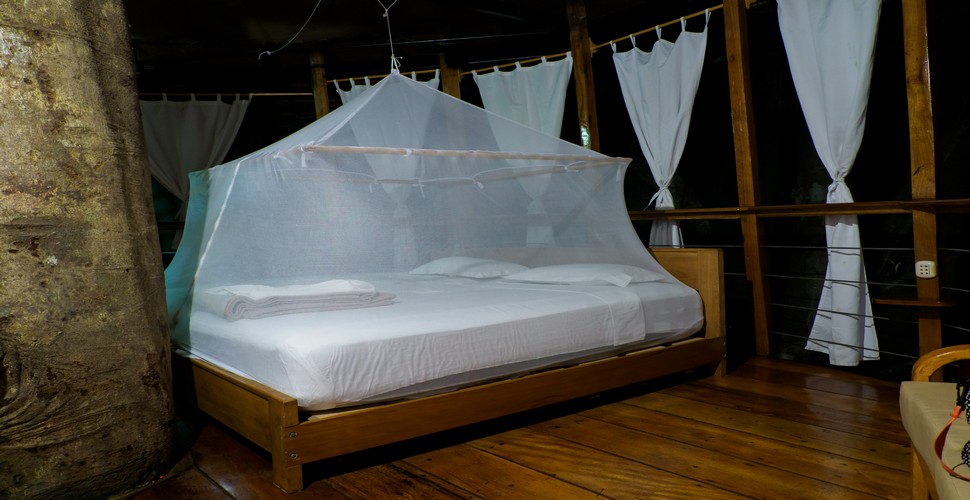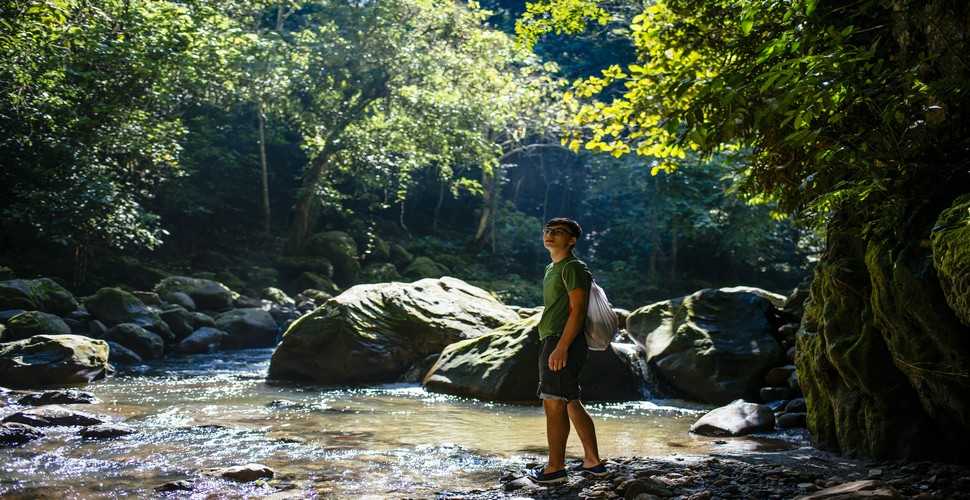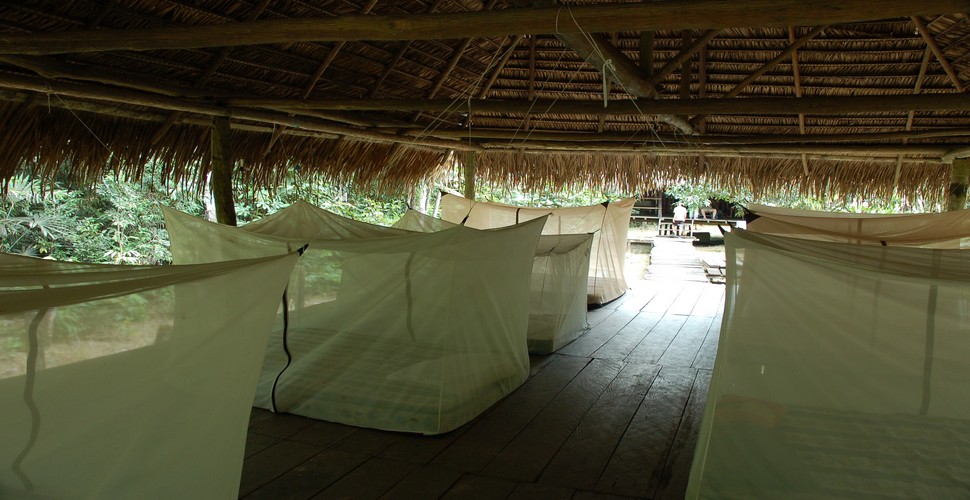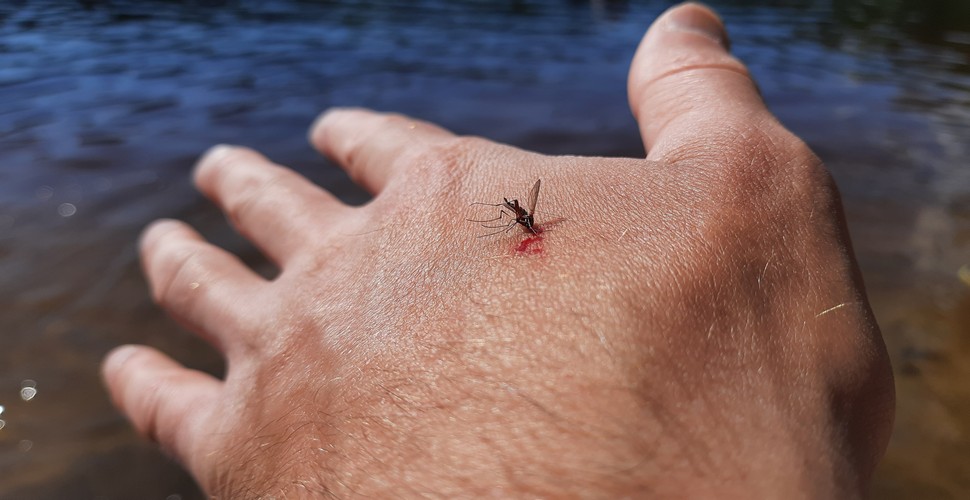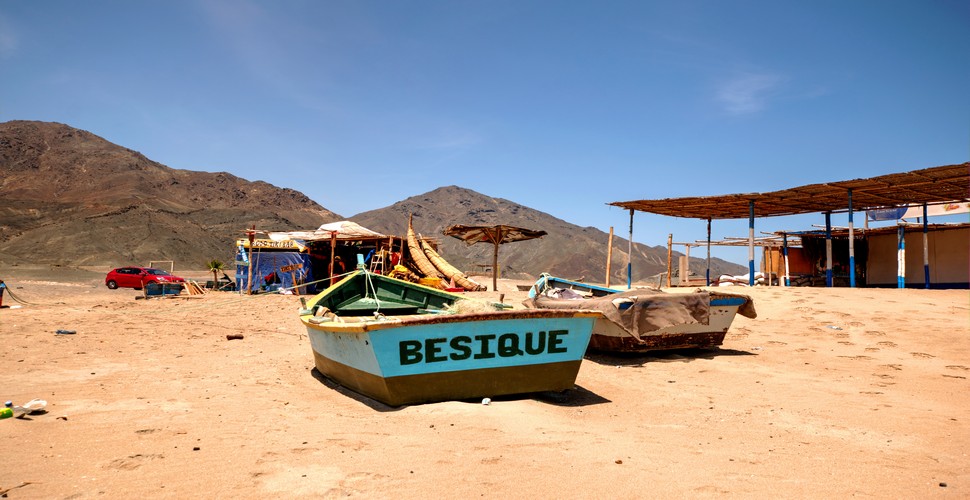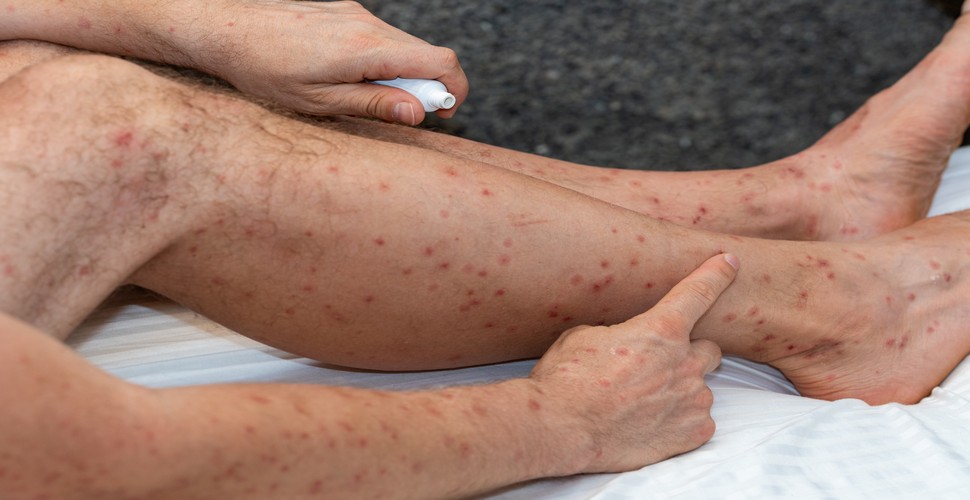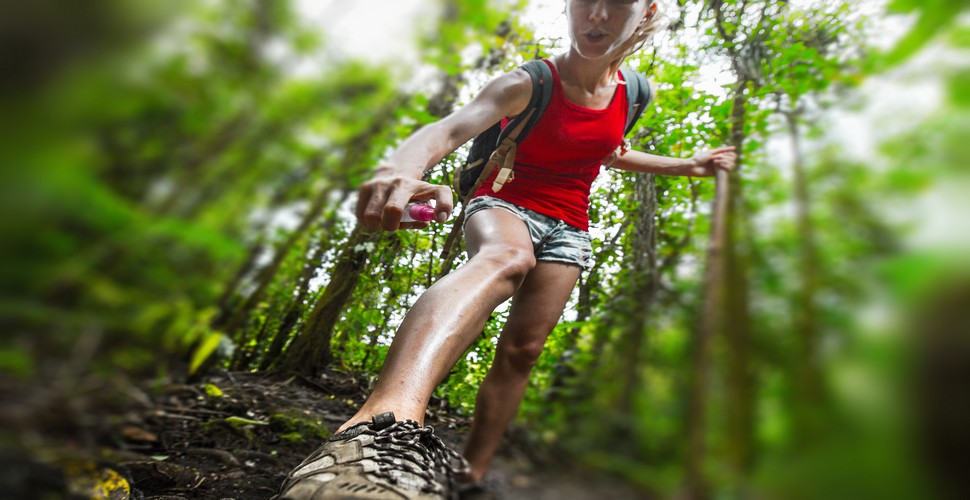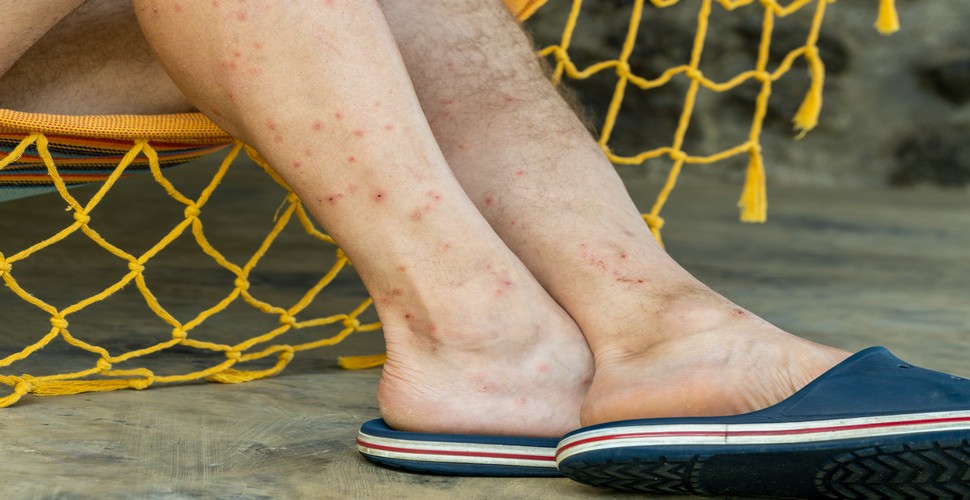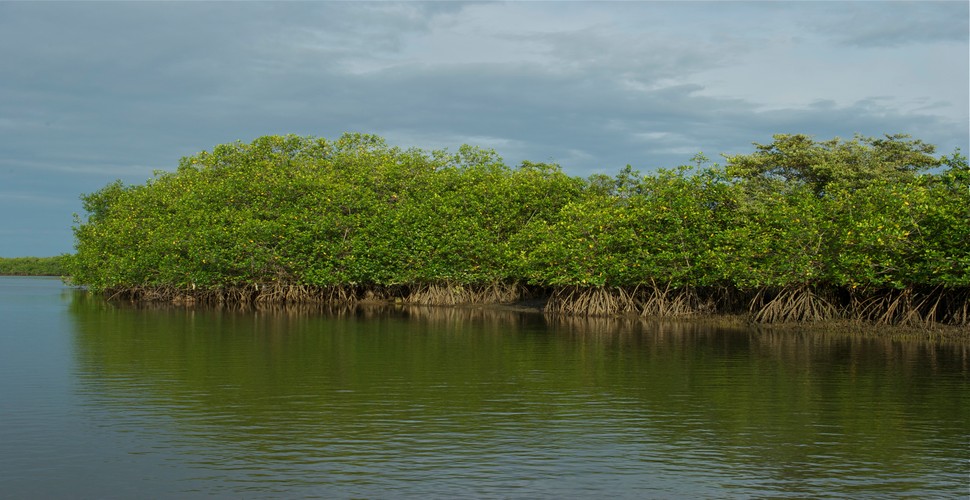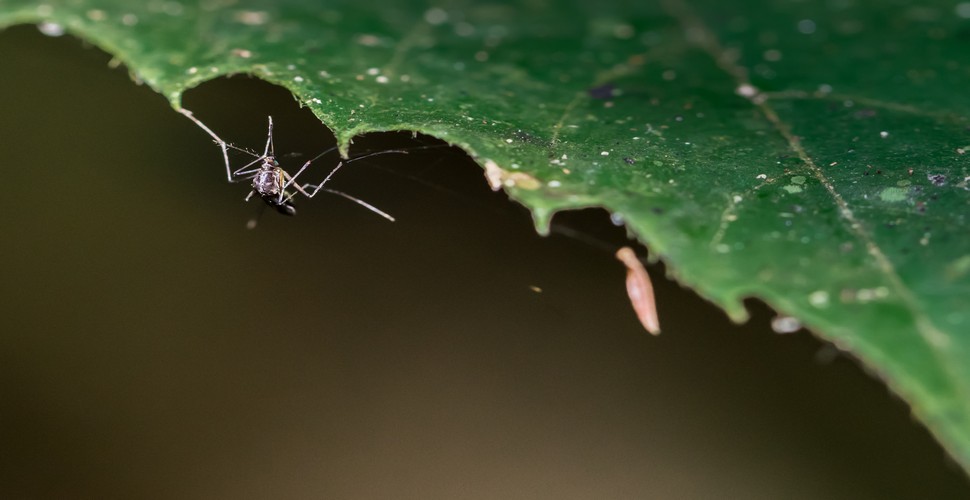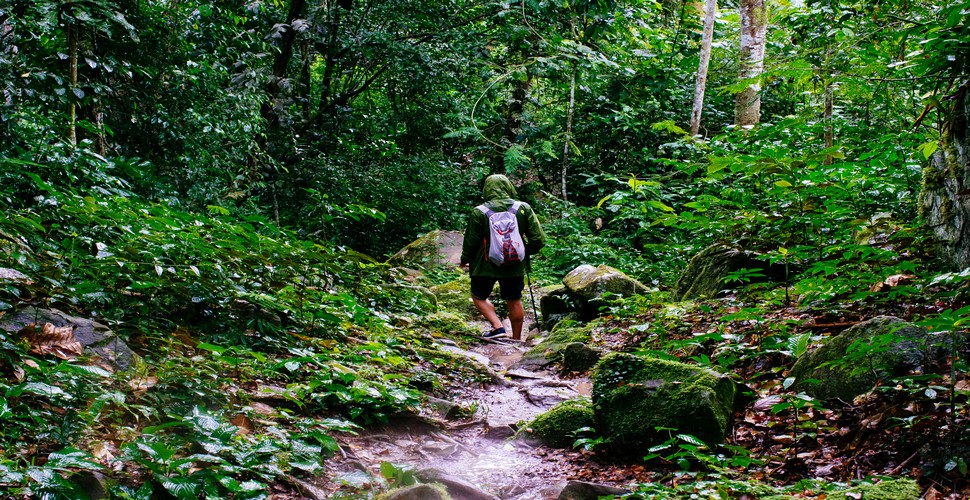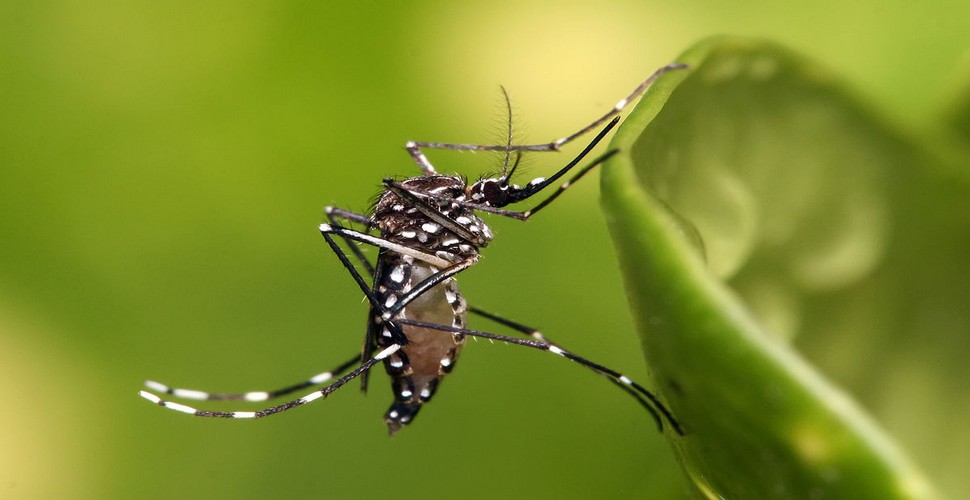

Claire Dean
Travel in South America is a joy to behold. The rich variety of destinations, experiences, landscapes and geography fascinated me so much, that I chose to relocate here, over 20 years ago! The best thing I ever did! Allow me to share my knowledge and passion for Central and South America with you and help you plan your holiday of a lifetime!

ARE YOU WORRIED ABOUT DENGUE FEVER ON YOUR VISIT TO PERU?
Written by:Claire Dean
Last Update: 2025-02-20
Latin America's diverse landscapes, rich cultures, and vibrant cities have always attracted travelers seeking new experiences. However, beneath this alluring façade lies a hidden threat: dengue fever. As travelers embark on journeys through countries like Peru, it's crucial to be aware of the risks associated with dengue and the preventive measures that can help ensure a safe and enjoyable trip. Peru, with its stunning landscapes ranging from the Andes Mountains to the Amazon rainforest, has become a dream destination for adventure enthusiasts and culture seekers. However, amidst the excitement of exploring this diverse country, travelers must also be wary of the lurking threat of dengue fever. Understanding the dengue risk in various regions of Peru and taking proactive measures can help ensure a memorable and safe journey.
Mosquito Bites
Understanding Dengue
Dengue fever, caused by the dengue virus transmitted through the bites of infected Aedes mosquitoes, poses a significant health concern in many tropical and subtropical regions, including Peru. Dengue fever is a significant health concern in several regions of Peru. While dengue outbreaks can occur across the country, certain areas are considered high-risk zones. Regions with warmer climates and higher mosquito activity, such as the Amazon rainforest and the northern coastal areas, are particularly prone to dengue transmission. The virus exists in four distinct serotypes, and infection with one type provides lifelong immunity to that specific serotype but only temporary immunity to the others. This means that multiple infections can occur over a person's lifetime, increasing the risk of severe illness.
The Amazon
How to Avoid Dengue
If you're planning a trip to Peru, especially to regions with a history of dengue outbreaks, here are some tailored precautions to consider:
- Amazon Rainforest Exploration
The Amazon basin, with its lush foliage and incredible biodiversity, is a magnet for nature enthusiasts. However, this region also harbors Aedes mosquitoes. When venturing into the rainforest, ensure you have adequate mosquito protection. Wear lightweight, long-sleeved clothing and use effective mosquito repellents on exposed skin.
Jungle Walk
- Northern Coastal Regions
Popular tourist destinations like Máncora and Piura along the northern coast of Peru have experienced dengue outbreaks. Stay in accommodations with screened windows and doors, or air conditioning, to minimize mosquito exposure during both day and night.
Mancora Beach
- Water-Based Activities
Activities such as kayaking and riverboat tours are common in Peru, but these often involve bodies of water that can serve as breeding grounds for mosquitoes. Take care to apply insect repellent before embarking on water-based excursions.
The Amazon River
- Urban Centers
Even in urban areas like Lima, the capital of Peru, dengue cases have been reported. The Aedes mosquitoes that transmit dengue thrive in urban environments as well. Be diligent about mosquito bite prevention even if you're exploring cities.
Piura
- Local Health Authorities
Stay informed about local health advisories and dengue outbreak updates in the specific regions you plan to visit. Local health authorities can provide valuable information and recommendations based on the current situation.
Peru Emergency Health Services
- Vigilance and Knowledge
Incorporating dengue prevention into your travel plans is a responsible approach to safeguarding your health while enjoying the beauty of Peru. By understanding the varying levels of dengue risk in different regions and adjusting your precautions accordingly, you can greatly reduce the chances of contracting the virus. Remember to recognize the symptoms of dengue, such as fever, joint pain, and rash, and seek medical attention if you suspect an infection.
Dengue Virus
Symptoms of dengue fever
Being able to identify the symptoms of dengue is crucial for early detection and appropriate medical care. The illness typically manifests in two forms: dengue fever and the more severe dengue hemorrhagic fever. Symptoms of dengue fever include high fever, severe headache, joint and muscle pain, fatigue, nausea, and a rash. If left untreated, dengue fever can progress to dengue hemorrhagic fever, which can lead to bleeding, organ failure, and even death in severe cases.
Tiger Mosquito
Treatment of Dengue Fever
If you suspect you have contracted dengue while traveling in Peru, it's important to seek medical attention promptly. While there is no specific antiviral treatment for dengue, medical care can help manage the symptoms and prevent complications. Here are some measures to consider:
- Hydration: Dengue can cause dehydration due to fever and sweating. Drink plenty of fluids, such as water, oral rehydration solutions, and clear soups, to stay hydrated.
- Rest: Get adequate rest to allow your body to recover from the illness.
- Pain Relief: Over-the-counter pain relievers like acetaminophen can help alleviate fever and joint pain. Avoid non-steroidal anti-inflammatory drugs (NSAIDs) like ibuprofen, as they can increase the risk of bleeding.
- Medical Care: If you experience severe symptoms, such as persistent vomiting, bleeding, or difficulty breathing, seek medical attention immediately. Hospitalization may be necessary in severe cases.
Protect Yourself
Why Visit Peru if It Has Cases of Dengue?
Peru beckons with its vibrant cultures, stunning landscapes, and diverse experiences. From the lively streets of Lima to the lush rainforests of Puerto Maldonado, to the mountains of The Andes and the magnificent Machu Picchu, a Peru adventure promises a tapestry of memories that will last a lifetime.
Piura Desert
Why a Peru Adventure is Worth It
The allure of Peru lies in its rich tapestry of cultures, ancient history, and breathtaking landscapes. Whether you're a history buff exploring ancient ruins or a nature enthusiast trekking through lush Amazon rainforests, a Peru adventure promises a unique blend of experiences that cater to every traveler's passion.
Remote Destinations of Peru
Different Itinerary Options for Peru
Tailor your Peru journey to match your interests, whether it's immersing yourself in the history of Machu Picchu, savoring the flavors of the coastal cuisine, or exploring the pristine rainforests of the Amazon Rainforest. Peru offers diverse itinerary options that cater to every traveler's desires.
Amazonas, Peru
How Difficult is a Peru Trip?
While a Peru trip offers a spectrum of experiences suitable for various fitness levels, it's essential to be mindful of the potential health risks, particularly the prevalence of dengue. Adhering to precautionary measures and proper planning can mitigate challenges, ensuring a safe and enjoyable adventure throughout amazing Peru.
Local Moto Taxi, Loreto
Trip Advisor Comments about Dengue in Peru
Explore firsthand accounts from fellow travelers on Trip Advisor, offering valuable insights into their experiences. Users praise the vibrant local cultures, breathtaking scenery, and the transformative nature of their journeys, providing a wealth of information to enhance your own adventure.
- "The cultural richness of Peru exceeded my expectations! While the threat of dengue was a concern, proper precautions made all the difference."
- "Just returned from an incredible trip to Peru! While the Amazon was breathtaking, I was a bit worried about dengue. Took the advice seriously - used strong repellent, covered up, and had no issues. Don't let it deter you; just be smart and enjoy the adventure!"
- "Machu Picchu and the Amazon were dreamy, but dengue was on my mind. Found a great eco-lodge that took mosquito precautions seriously. No bites! Just be vigilant, use repellent, and stay informed. Peru is worth every moment."
- "Explored Lima, Cusco, and the Amazon. Spectacular! Did my research on dengue and took necessary precautions. Stayed in accommodations with screens, used repellent religiously. Health comes first, but it didn't dampen the adventure. 10/10!"
- "The biodiversity in Peru is mind-blowing! Anticipated dengue risks in the Amazon, so I packed extra-strength repellent and wore long sleeves. No mosquito bites! Nature lovers, take precautions and immerse yourself in Peru's wonders."
- "Embarked on a solo journey across Peru. Stayed in hostels and used public transport. Dengue was a concern, but simple precautions worked wonders. Met locals who shared helpful tips. Don't fear the adventure; embrace it smartly!"
- "Took our family to explore Peru's wonders. Kids loved it! Dengue was a concern, but with proper planning and mosquito precautions, we had a worry-free trip. Peru offers a fantastic family adventure with a bit of caution."
- "Conquered the Andes and explored the Amazon basin. Altitude and dengue were on my radar. Acclimatized gradually and used strong repellent in the jungle. Worth it for the epic views and unique experiences. Peru, you stole my heart!"
- "Indulged in Peruvian cuisine but was cautious about dengue. Packed repellent, stayed in accommodations with screens, and enjoyed street food safely. Don't compromise on the culinary delights; just stay vigilant!"
- "Luxury travel in Peru with a health-conscious twist. Opted for high-end lodges that took dengue seriously. Impeccable service and safety measures. Splurge a bit for peace of mind; Peru's beauty deserves it."
- "Backpacked through Peru, embraced the unknown. Dengue was a concern, but with common-sense precautions, it was smooth sailing. Met fellow travelers who shared tips. Backpackers, Peru is a gem; just be smart about it!"
Piura Sugar Cane Farm
The Best Time to Visit Peru
The best time to visit Peru to minimize the risk of dengue is during the dry season, which typically runs from May to October. This period coincides with the winter months in the Southern Hemisphere. Here are some considerations for planning your trip:
Dry Season (May to October):
This is generally considered the best time to visit Peru. The weather is dry and cool, making it ideal for exploring various regions, including Lima, Cusco, Machu Picchu, and the Andes. The risk of dengue is lower during the dry season as there is typically less standing water, reducing mosquito breeding grounds.
Specific Months to Consider:
June to August is peak tourist season, with clear skies and comfortable temperatures. However, consider visiting in May or September to avoid the peak crowds while still enjoying favorable weather.
Avoiding the Rainy Season
Dengue transmission is often associated with the rainy season, which occurs from November to April. During this period, the increased rainfall creates more breeding sites for mosquitoes. If possible, plan your visit to Peru outside of these months.
Jungle and Amazon Basin:
If you plan to explore the jungle or the Amazon Basin, exercise additional caution, as these areas may have a higher risk of mosquito-borne illnesses, including dengue. Regardless of the season, use insect repellent, wear long sleeves, and consider staying in accommodations with screens.
Check Local Conditions:
Always stay informed about the current health conditions in the specific regions you plan to visit. Check for travel advisories, and be aware that conditions can vary between different areas of the country.
Eco-Lodge Mosquito Nets
Can You Do a Peru Trip on Your Own?
Solo adventurers will find ample opportunities to explore Peru independently, while those preferring group experiences can opt for guided tours. Latin America accommodates both, offering a flexible landscape for solo and group travelers alike. Consult with a healthcare professional for vaccinations and health advice. If you're visiting regions with a risk of mosquito-borne diseases, such as the Amazon, take necessary precautions against diseases like dengue.
Solo Trip
What to Consider When You Choose a Peru Trip If You Are Concerned about Dengue
- Choose High-Altitude Destinations
Consider focusing on high-altitude destinations like Cusco and Machu Picchu. Mosquitoes, including those carrying dengue, are less prevalent at higher elevations. This allows you to explore iconic sites while reducing the risk of mosquito-borne diseases. - Be Cautious in Jungle and Amazon Regions
If you plan to visit the Amazon rainforest or other jungle areas, be extra cautious. These regions may have a higher risk of mosquito-borne illnesses, including dengue. Use insect repellent, wear long sleeves, and choose accommodations with proper screening. - Accommodation Choices
Select accommodations with measures to minimize mosquito exposure. Look for places with screens on windows and doors, as well as air conditioning or mosquito nets. Higher-end accommodations may have more comprehensive mosquito control. - Use Effective Insect Repellents
Pack and use EPA-registered insect repellents with ingredients like DEET, picaridin, or oil of lemon eucalyptus. Apply repellent on exposed skin and clothing, especially during dawn and dusk when mosquitoes are most active. - Wear Protective Clothing
Dress in long sleeves, long pants, and closed shoes, particularly when venturing into areas where mosquitoes may be prevalent. This reduces exposed skin and the risk of mosquito bites. - Stay Informed and Updated
Monitor travel advisories and health alerts related to dengue and other mosquito-borne diseases. Stay informed about the current situation in the specific regions you plan to visit. - Consult with Healthcare Professionals
Seek advice from healthcare professionals before your trip. Discuss your travel plans, and inquire about vaccinations and preventive measures. They can provide personalized guidance based on your health and itinerary. - Pack a Travel Health Kit
Include items such as insect repellent, antimalarial medication if recommended, a basic first aid kit, and any prescription medications. Having these essentials on hand can be beneficial. - Avoid Stagnant Water
Dengue-carrying mosquitoes breed in stagnant water. Be cautious around areas with standing water, such as ponds or puddles. Take measures to avoid mosquito breeding sites.
Mosquito Netting
- Travel Insurance
Consider obtaining comprehensive travel insurance that covers medical emergencies. Confirm that it includes coverage for potential health issues related to dengue and evacuation if needed. - Adjust Your Itinerary as Needed
Be flexible with your travel plans based on health conditions and risk levels. If there are outbreaks or increased concerns about dengue in specific areas, consider adjusting your itinerary accordingly. - Stay Proactive and Vigilant
Be proactive in taking preventive measures and vigilant about your health. If you experience symptoms such as high fever, severe headaches, or muscle pain, seek medical attention promptly.
Mosquito Biting!
How to Get to Peru
Peru has several international airports, with the primary ones being Jorge Chávez International Airport (LIM) in Lima, Alejandro Velasco Astete International Airport (CUZ) in Cusco, and Rodríguez Ballón International Airport (AQP) in Arequipa. Your choice of entry airport may depend on your specific travel plans.
If your itinerary involves traveling to other cities or regions within Peru, you can use domestic flights, buses, or trains. Domestic flights are common for covering longer distances, while buses and trains are viable options for shorter journeys. On Valencia Travel Peru vacation packages, all land transport is included throughout the country.
Boat on a Piura Beach
Essential Packing List for Dengue Regions of Peru
Pack strategically with essentials such as lightweight clothing, sturdy footwear, insect repellent, and a comprehensive medical kit. Be prepared for various climates, ensuring you're equipped for both urban exploration and outdoor adventures. When traveling to regions in Peru where dengue is prevalent, it's essential to pack thoughtfully to minimize the risk of mosquito bites and protect yourself from potential health hazards.
Clothing
-
Long-Sleeved Shirts and Pants:
-
Wear lightweight, long-sleeved shirts and long pants to cover exposed skin, especially during dawn and dusk when mosquitoes are most active.
-
Lightweight and Breathable Clothing:
-
Choose breathable fabrics like cotton and moisture-wicking materials to stay comfortable in the warm climate.
-
Wide-Brimmed Hat:
-
Protect your face and neck from the sun with a wide-brimmed hat.
-
Swimwear:
-
If you plan to enjoy water activities, pack swimwear, but consider using insect repellent when near water.
-
Sturdy Closed-Toe Shoes:
-
Opt for closed-toe shoes to protect your feet from mosquitoes and other potential hazards.
Insect Protection:
-
EPA-Registered Insect Repellent
-
Bring a high-quality insect repellent with DEET, picaridin, or oil of lemon eucalyptus. Reapply according to the product instructions.
-
Permethrin-Treated Clothing
-
Consider treating your clothing with permethrin, an insect repellent that can be sprayed or soaked onto fabric for added protection.
-
Mosquito Nets
-
If you plan to stay in accommodations without proper screening, a portable mosquito net can provide an extra layer of protection during sleep.
Health and Safety
-
Travel Health Kit:
-
Assemble a basic first aid kit with items such as bandages, antiseptic wipes, pain relievers, and any necessary prescription medications.
-
Sunscreen:
-
Pack a broad-spectrum sunscreen with a high SPF to protect your skin from the strong sun.
-
Rehydration Salts:
-
In case of illness, electrolyte rehydration salts can be useful to combat dehydration.
-
Hand Sanitizer:
-
Keep a travel-sized hand sanitizer for times when handwashing facilities may be limited.
After Bite!
How to Prepare for a Trip to Peru
-
Consult with a Healthcare Professional:
Schedule a visit with a healthcare professional well in advance of your trip. Discuss your travel plans, vaccinations, and any health concerns. -
Vaccinations:
Check if any vaccinations are recommended or required for your trip to Peru. Yellow fever vaccination is often recommended for travelers visiting jungle regions. -
Dengue Prevention Medication:
While there is no specific medication for preventing dengue, antimalarial medication may be prescribed for certain regions. Consult with your healthcare provider about the necessity for your specific itinerary. -
Mosquito Repellent:
Purchase an EPA-registered insect repellent with ingredients like DEET, picaridin, or oil of lemon eucalyptus. Apply it to exposed skin and clothing, especially during peak mosquito activity times. -
Clothing Choices:
Pack long-sleeved shirts, long pants, and closed shoes to minimize exposed skin. Lightweight and breathable fabrics are ideal for the warm climate.
Repellent
Pro Tips for Visiting The Dengue Regions of Peru
-Invest in high-quality, EPA-registered insect repellents containing DEET, picaridin, or oil of lemon eucalyptus. Apply it to exposed skin and clothing, following product instructions.
-Be aware that dengue-carrying mosquitoes are active during the day. Use repellent and take precautions even when exploring during daylight hours.
-Steer clear of areas with stagnant water, as these are breeding grounds for mosquitoes. Eliminate standing water around your accommodation if possible.
-Plan outdoor activities to avoid peak mosquito activity times, especially early morning and late afternoon.
Once Bitten, Twice Shy!
How Much Does a Trip to Peru Cost?
The cost of your adventure varies depending on factors such as itinerary, accommodation preferences, and activities. Research budget-friendly options and plan accordingly, keeping in mind potential expenses for health precautions and travel insurance. Ask us here for Peru trips for your budget!
Manglares, Tumbes
FAQs
Is dengue prevalent in Peru, and which regions are more affected?
Dengue is present in some parts of Peru, particularly in regions with warmer climates, such as the Amazon Basin and certain coastal areas in the North of Peru. Stay informed about the current situation and take necessary precautions.
When is the peak season for dengue in Peru?
Dengue cases often peak during the rainy season, which typically occurs from November to April. Take extra precautions during this period, such as using insect repellent and wearing protective clothing.
What measures can I take to prevent dengue while in Peru?
Use EPA-registered insect repellent, wear long sleeves and pants, and stay in accommodations with screened windows. Avoid areas with stagnant water, as these can be breeding grounds for mosquitoes.
Are there any specific regions I should avoid due to a higher risk of dengue?
While the risk exists in various regions, it may be higher in areas with a tropical climate. Stay updated on travel advisories and consider adjusting your itinerary based on current conditions.
Can I still enjoy outdoor activities in Peru while minimizing the risk of dengue?
Yes, you can still enjoy outdoor activities by taking preventive measures. Use insect repellent, especially during dawn and dusk when mosquitoes are most active. Consider wearing long sleeves and pants for added protection.
Are there any vaccinations specifically for dengue?
There is no vaccine for dengue fever widely available. Consult with a healthcare professional to discuss general travel vaccinations and preventive measures.
What should I do if I experience symptoms of dengue during my Peru trip?
Seek medical attention immediately if you experience symptoms such as high fever, severe headache, pain behind the eyes, joint and muscle pain, rash, or bleeding. Inform healthcare providers about your recent travel history.
Can I still visit Peru during the rainy season, or is it advisable to plan my trip during a different time of the year?
You can still visit Peru during the rainy season, but it's important to be aware of the increased risk of dengue. Plan accordingly by taking preventive measures and staying informed about weather conditions.
Is travel insurance recommended for a trip to Peru, considering the risk of dengue?
Yes, travel insurance is highly recommended. Ensure that your policy covers medical emergencies and evacuation. It provides a safety net in case of unexpected health issues during your journey.
Are vaccinations required before traveling to Peru?
Yes, certain vaccinations, such as yellow fever and typhoid, are recommended. Consult with a healthcare professional well in advance of your trip to ensure you have the necessary vaccinations for your Peru vacation.
How prevalent is dengue, and what precautions should I take?
Dengue is present in some regions of Peru. Use insect repellent, wear long sleeves and pants, and stay in accommodations with screened windows. Remove standing water near your lodgings to minimize mosquito breeding grounds.
Is it safe to drink tap water in Peru?
It's advisable to drink bottled or purified water to avoid waterborne illnesses. Carry a reusable water bottle with a built-in purifier for added convenience or ask your hotel for their purified water containers to refill your water bottle. Tap water is heavily chlorinated in certain places like Lima or Cusco but in more rural areas you do not know where the water is sourced from.
Can I rely on over-the-counter mosquito repellents, or should I consider more potent options?
While over-the-counter repellents can be effective, consider using products with higher concentrations of active ingredients in regions with a higher risk of dengue. Consult with a healthcare professional for recommendations.
Mosquito on a Leaf in The Rainforest
Are there any specific precautions for travelers with children to prevent dengue in Peru?
Take extra precautions with children, such as using mosquito nets during sleep, applying child-friendly insect repellent, and dressing them in long sleeves and pants. Avoid exposing them to areas with high mosquito activity.
What steps can I take to minimize the risk of dengue while staying in urban areas of Peru?
Even in urban areas, where dengue risk might be lower, take preventive measures. Use insect repellent, stay in accommodations with screened windows, and be cautious around areas with standing water.
Can I contract dengue more than once?
Yes, it is possible to contract dengue multiple times, as there are four distinct serotypes of the virus. While recovery from one serotype provides immunity to that specific type, it does not offer protection against the others.
Are there any natural remedies or alternative methods to prevent dengue in Peru?
While natural remedies may offer some relief from mosquito bites, they are not as effective as proven insect repellents. Rely on EPA-registered repellents and follow recommended preventive measures for optimal protection.
Should I be concerned about dengue if I plan to visit higher-altitude areas in Peru, such as Cusco or Machu Picchu?
The risk of dengue decreases at higher altitudes. However, it's essential to take general mosquito precautions, especially in transitional zones. Focus on altitude-related concerns such as acclimatization to the elevation.
Can dengue be transmitted through food or water in Peru?
Dengue is primarily transmitted through mosquito bites and is not food or waterborne. However, practicing good hygiene, including safe food and water practices, is essential for overall health during your trip.
What medical facilities are available in Peru for dengue treatment, especially in more remote areas?
Access to medical facilities may vary. In urban areas, healthcare facilities are generally available, but in remote regions, services may be limited. Research and plan accordingly, and consider travel insurance with medical evacuation coverage.
Should I be concerned about dengue if I plan to participate in adventure activities, such as jungle treks or river excursions?
Adventure activities may increase exposure to mosquitoes. Take extra precautions during such activities, wear protective clothing, use insect repellent, and consider staying in accommodations with screened sleeping areas.
Are there any specific considerations for individuals with pre-existing health conditions, such as immunocompromised or pregnant travelers, regarding dengue in Peru?
Consult with a healthcare professional before traveling, especially if you have pre-existing health conditions. Pregnant travelers should take extra precautions and seek medical advice, as dengue can have more severe consequences during pregnancy.
Hiking Trail, Iquitos Jungle
As you embark on your Peruvian adventure, the captivating landscapes and vibrant culture await you. By being aware of the dengue risk in high-risk regions and adopting preventive measures, you can explore the wonders of Peru with confidence. Your journey will be enriched by your commitment to both experiencing the country's splendor and protecting your well-being. Are you worried about dengue for your Peru vacation? Contact us here for more information about dengue fever.


